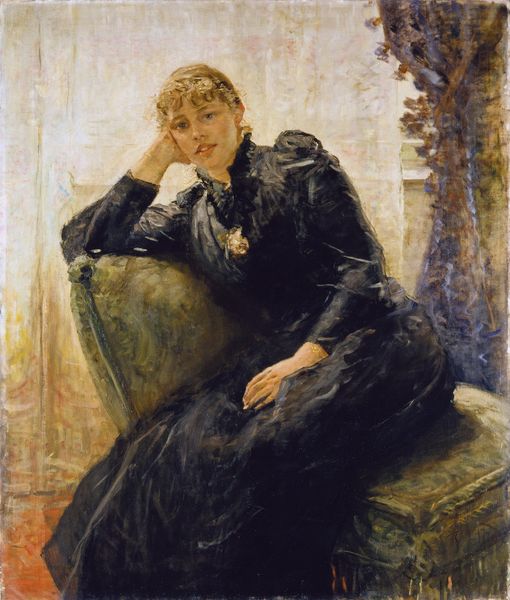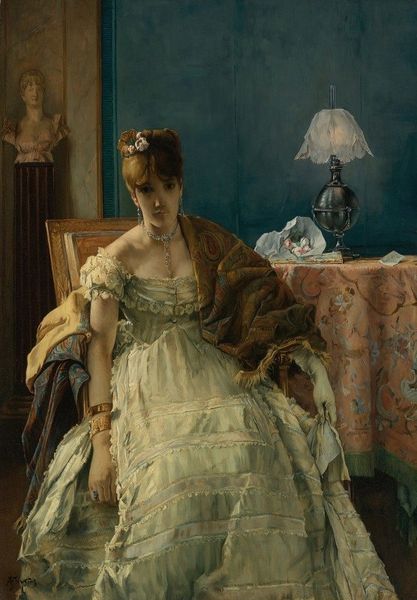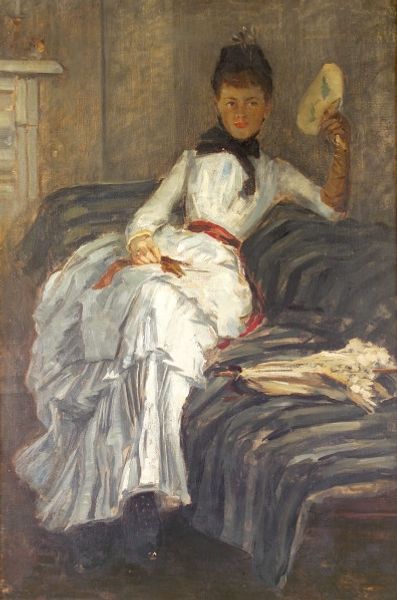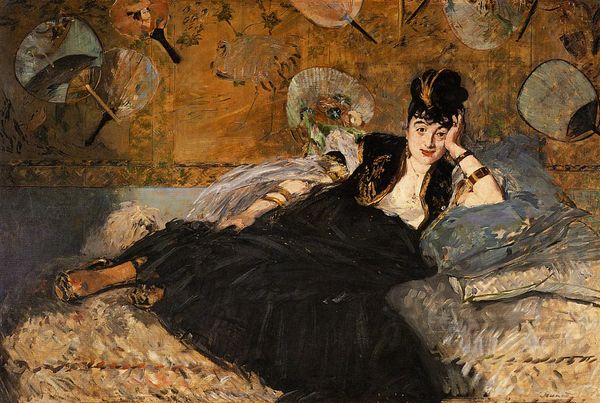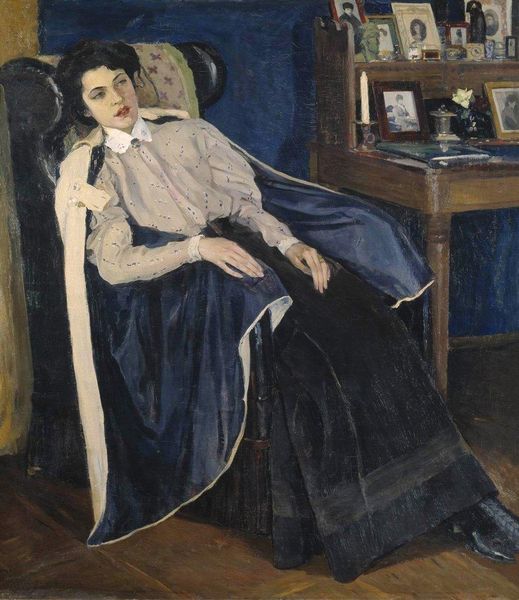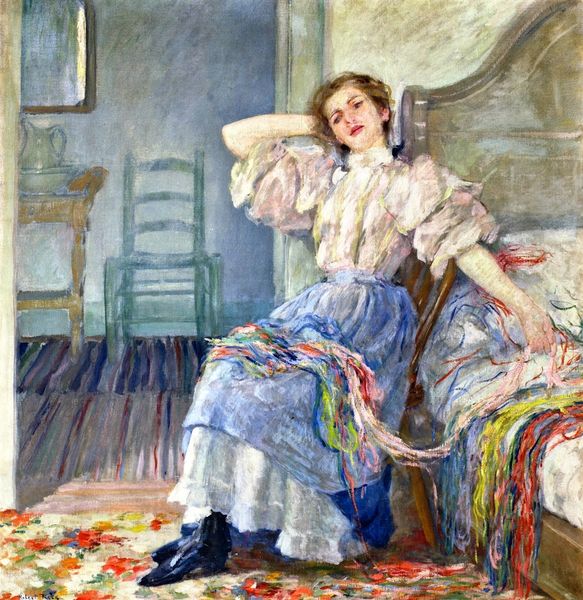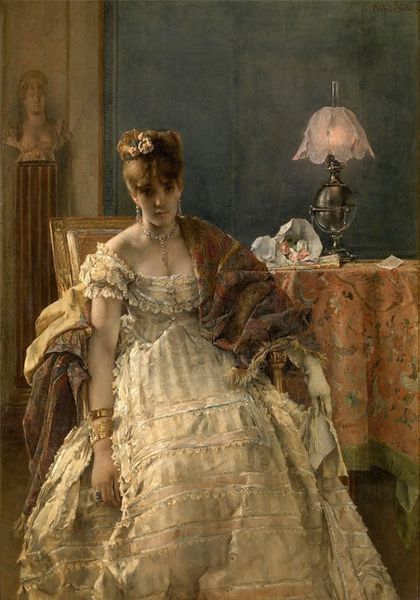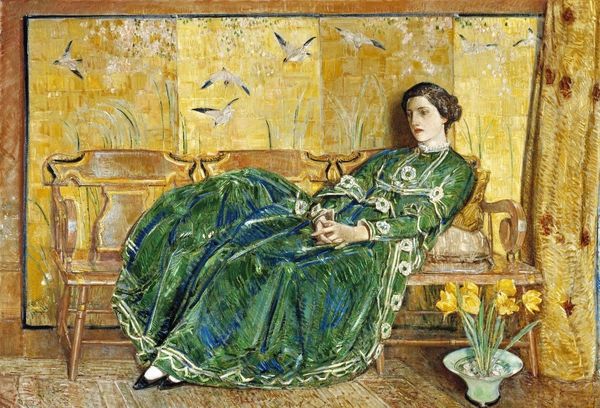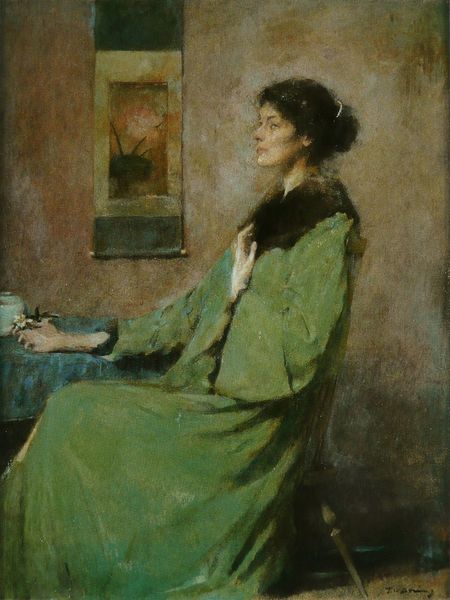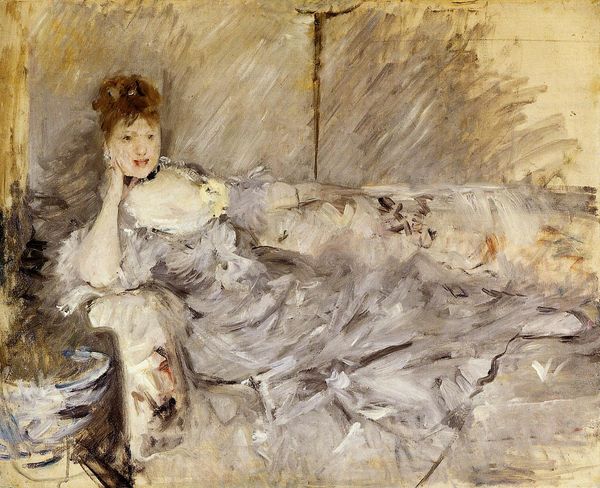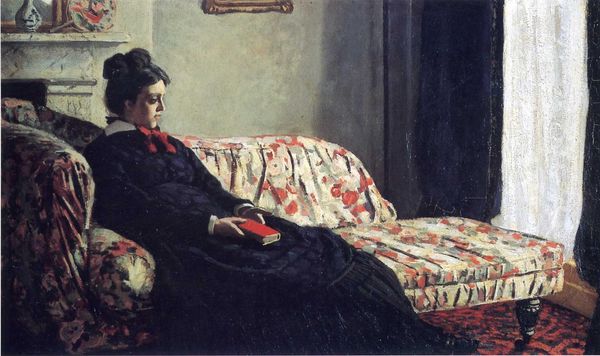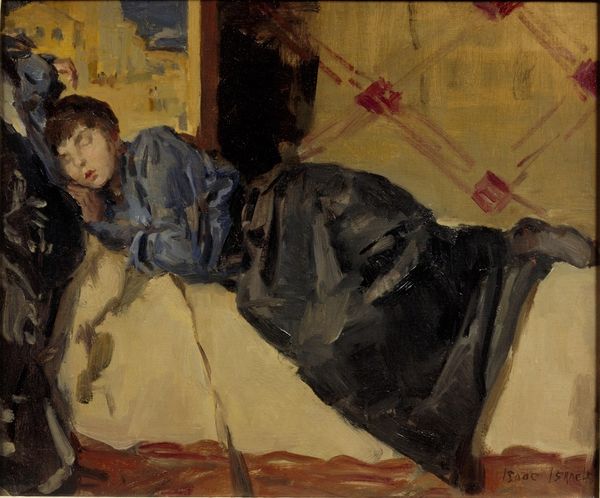
painting, oil-paint, impasto
#
portrait
#
figurative
#
painting
#
impressionism
#
oil-paint
#
oil painting
#
impasto
#
intimism
#
genre-painting
Copyright: Public Domain: Artvee
Editor: This is Paul César Helleu's "La Lettre," painted around 1880 using oil paints. The woman, seemingly lost in the contents of her letter, exudes a certain melancholy. How do you interpret this work, especially in the context of the late 19th century? Curator: I see a complex commentary on the roles and restrictions placed upon women during that period. Notice the setting; she's confined within the domestic sphere, her world seemingly limited to this room and the contents of the letter. This intimacy also points to the importance of correspondence and societal restrictions that limited interaction. It also presents ideas of "performance." How much is truly being shown? Editor: Performance in what sense? Do you mean her clothes, posture, or something else? Curator: I mean it more broadly: what is expected and acceptable from this class of women. Reading this letter in this way seems almost performative. It plays on the ideas of both class and sexuality in society. We see her absorbed but what about her interior experience? Is it being shared or hidden from the viewer? Editor: That's a really interesting idea. It feels like a deliberate choice to show this very personal act in this public (painting) forum. What might it mean that she’s posed to allow the audience to see her private correspondence? Curator: Exactly. What's absent is just as significant as what’s present. How do you feel her clothes present her status within the scene? Editor: The detail, from the lace to the multiple layers of fabrics, speaks volumes about her social standing. It almost contrasts with the idea of something that can easily convey scandal or a shift in circumstances. Curator: Indeed! And it brings another layer to our dialogue – art history contextualized by cultural understanding and social expectations. These can't exist separately from each other. Editor: Absolutely. Looking at it that way brings so much more depth to what initially seemed to be a simple, intimate scene. I didn’t realize how much this pointed to what late 19th-century women went through.
Comments
No comments
Be the first to comment and join the conversation on the ultimate creative platform.

